Makes and Models
2021 Peugeot 308 GT-Line: Private Fleet Car Review
This Car Review Is About: Peugeot’s stylish contender in the small to mid size hatchback category, with the addition of a wagon. There is the entry Allure, a Touring (wagon), the GT-Line and GT, which disappeared from the Peugeot Au site in January and has been discontinued. The 308 itself is an attractive looking machine, but is it a city or highway car? How Much Is It?: The range starts at $30,499 for the Allure, and has $34,990 against the GT-Line as a drive-away price.
How Much Is It?: The range starts at $30,499 for the Allure, and has $34,990 against the GT-Line as a drive-away price.
Under The Bonnet Is: Peugeot’s award winning engine at 1.2L of capacity, with three cylinders, a preference for petrol, and their EAT6 auto with eight ratios. Peak power is 96kW @5,500rpm, and a handy turbo-fed 230Nm @1,750Nm. It’s EURO6 emissions compliant at just 112 grams of CO2 per kilometre, and comes with Stop/Start tech. Peak economy is best seen on the highway, says Peugeot, where they quote 4.2L/100km.  In the “burbs” they say 6.4L/100km, and the combined cycle is 5.0L/100km. Fuel tank size is 53.0L. This didn’t equate to our real world driving, as just 250km worth of city driving had the gauge reading at a half tank used. Our overall average finished at 7.7L/100km on our typical 70/30 urban to highway split.
In the “burbs” they say 6.4L/100km, and the combined cycle is 5.0L/100km. Fuel tank size is 53.0L. This didn’t equate to our real world driving, as just 250km worth of city driving had the gauge reading at a half tank used. Our overall average finished at 7.7L/100km on our typical 70/30 urban to highway split.
On The Outside It’s: Typically French with good looks, svelte curves, and a hint of in-your-face assertiveness. It stands just 1,457mm in height yet is a proportionally longish 4,253mm, and spreads 1,553mm to 1,559mm in track. It’s low, long, and as a result, comes with an assertive road stance. There are the signature fins in the headlight assembly and the strip of LEDs for the indicators located in the “eyebrow” of the headlights. The rear lights feature another “Pug” signature, with the three strip “claw marks”. Wheels are alloys and painted a flat dark grey on sections of the wheel that give a ten spoke look. Rubber is, of course, Michelin, and are the super grippy Pilot Sport 3 at 225/40/Z18.
The rear lights feature another “Pug” signature, with the three strip “claw marks”. Wheels are alloys and painted a flat dark grey on sections of the wheel that give a ten spoke look. Rubber is, of course, Michelin, and are the super grippy Pilot Sport 3 at 225/40/Z18.
On The Inside It’s: Oddly, not quite as user friendly, in a couple of ways, as the Partner van. That has a better driver’s screen interface which is more accessible via the steering wheel tabs. In this 308 it was a button the right hand, wiper operating, stalk.
The button to deactivate the Stop/Start system, which is just that little bit too eager in the 308 GT-Line, is also more visible in the Partner.
Seats are cloth covered with leather type material on the wings, and metallic looking threads in the middle. The audio is AM/FM only, however a smartphone can be connected via USB or Bluetooth. It sits atop a dash with a defined W styling, and with minimal secondary controls.
The audio is AM/FM only, however a smartphone can be connected via USB or Bluetooth. It sits atop a dash with a defined W styling, and with minimal secondary controls.
This means using it necessitates eyes off the road as all main controls are on the exterior of the screen, and don’t always respond to a tap the first time whilst in motion.
Cabin plastics have a hard touch yet have a fine grain to the touch.
To start the 308, a press button Start/Stop system is employed, with the button in the centre console and for safety’s sake must be held for a second or so. The park brake comes on automatically when the doors are opened and although there is a setting to disengage it, it’s just as easy to start, then press it off as it’s right behind the Start button.
The indicator stalk is on the left hand side, with auto wipers engaged and disengaged by a dip of the right hand stalk. The wipers themselves aren’t terribly robust in motion. Airvents are thin horizontally and the touchscreen is the only option in controlling the system. And until you re-touch another tab, it’ll stay on the chosen (i.e. aircon) screen until the car powers off.
Airvents are thin horizontally and the touchscreen is the only option in controlling the system. And until you re-touch another tab, it’ll stay on the chosen (i.e. aircon) screen until the car powers off.
That centre console holds just one cup, with smallish bottle holders in the four doors.
The rear hatch is manually operated, opening to a 435L cargo section, with the press tab logically located in the upper section of the number plate recess. Seats down, there’s 1,274L. The spare, incidentally, is a space saver. On The Road It’s: A firm ride on the highways, with just the right amount of damping when required.
On The Road It’s: A firm ride on the highways, with just the right amount of damping when required.
It does, though, exhibit skittishness on some road joins and the like, with a mild but noticeable steering rack shake and accompanying left or right hop.
The location of the steering wheel, a Peugeot design signature, allows the GT-Line to feel sporty in the hands and in the handling. Its light, but not so that it isolates feedback.
The eight speed auto is a pearler, with quick shifts and perfectly matched to the tiny engine’s torque delivery.
We did notice though that the engine isn’t a fan of cold morning starts. Our time with the Peugeot 308 GT-Line coincided with some varying La Nina weather, with some mornings having a lacklustre and slow to react driveline.
We also noticed that the turbo behaviour would be different in nature at the same driving points, such as being ready to kick in or well off boost at the same speed coming to the same stop sign or give way sign.
In some instances, this lead to a few deep breath as the lack of urge at times had oncoming traffic looking to be in proximity earlier than they should, whereas at other times the engine would be ready to pull the 308 away without fuss. Disconcerting? Just a bit…
When it’s all cooperating, the engine and auto make a wonderful around town companion. There’s some decent urge from a standing start, and rolling acceleration is also decent without being outstanding. It’s a good highway cruiser, and is relatively quiet, even with the limpet grip Michelin tyres.
It’s a good highway cruiser, and is relatively quiet, even with the limpet grip Michelin tyres.
Unfortunately for us, the 308 wasn’t as suitable as needed for our Christmas travel requirements. This means the economy for the distance knowing to be travelled would be problematic with four humans and a decent amount of luggage.
Also, in some areas, the 1.2L would have struggled in the numerous uphill runs known for the route, and again would have played havoc with the economy.
What About Safety?: Pretty standard nowadays with AEB, Forward Collision Warning, and Sign Recognition.
Blind Spot Alert, reverse camera, and six airbags complement the main features.
What About Warranty And Service?: Five years warranty and unlimited kilometres are standard, and servicing is capped price, with Peugeot’s website providing specific pricing per vehicle type.
At The End Of The Drive. In a very competitive market, the 308 range is up against the Cerato, i30, Corolla, offerings from Ford and Mazda, and Renault’s Megane.
The drive is good, the drive-train a willing package, and it’s not unattractive inside and out.
In our opinion, it’s a very good city car and a not unworthy consideration on price. Having just two models to choose from makes choice an easy one but when others offer a broader range, it can be seen as a factor against it.
The dichotomy of the engine’s performance left us wondering about the overall consistency of delivery, a factor that doesn’t appear to be an issue in other brands.
Electric History: Hispano-Suiza Carmen Boulogne.
One of the oldest names in automotive and aviation circles, Hispano-Suiza, has launched a second vehicle in its 21st century rebirth. In 2019 the company unveiled the Carmen, a re-interpretation of a classic design from the 1930s called the Dubonnet Xenia. The Carmen Boulogne is a sportier evolution of that iconic vehicle. It is a fully electric vehicle and exclusivity will be stratospheric. Just five will be produced.
Dubonnet Xenia 1930s
The company’s lineage can be traced back over 120 years. Emilio de la Cuadra, a Spanish artillery captain, had been working on electric cars in Barcelona in 1898. During a visit to Paris, he met and subsequently employed Marc Birkigt, a Swiss born engineer. The pair collaborated and swiftly produced two gasoline powered engines which were released in 1900. Some financial hiccups saw a restructuring in 1902 and 1903, with a new owner and name change to Fábrica Hispano-Suiza de Automóviles (Spanish-Swiss Automobile Factory) which went bankrupt in 1903.
La-Cuadra automobile
José María Castro Fernández was the owner and in 1904 the company underwent yet another rebuild, this time more successfully and known as La Hispano-Suiza Fábrica de Automóviles. Damian Mateu, a Spanish entrepreneur, would partner with Birkigt to formalise the rebirth, and his granddaughter, Carmen, is the inspiration for the naming of the company’s 21st century vehicles. Come WW1 and aircraft engines would be produced under the watchful eyes of Birkigt. 1919 and they returned to automotive manufacturing and grew from there.
The Boulogne name dates back to 1921, when Hispano Suiza made a racing version of its high-performance H6 Coupé and entered it in the George Boillot Cup, an endurance race lasting more than 3.5 hours around the French city of Boulogne. Three consecutive victories with André Dubonnet (1921), Paul Bablot (1922), and Léonce Garnier (1923) driving the mighty Hispano Suiza H6, would be the results.
The Hispano Suiza Carmen Boulogne pays tribute to these historic motorsport victories with this fully electrically powered version packing 1,100hp/820 kW and a maximum velocity of 180mph/290kmh. The sprint to 100kmh (62mph) will take just 2.6 seconds. Four permanent-magnet synchronous engines, two on each rear wheel, will power the carbon fiber roof, body, and subframed Carmen Boulogne. The design, engineering, and production of the Carmen Boulogne is a result of a collaboration between Hispano-Suiza and a company specializing in the development of electric motors and motorsports, QEV Technologies.
Formula-E, a race series and a working test-bed for battery powered vehicles, has contributed to the development of the 1,180ft-lb/1,600Nm engines, and lithium-ion polymer batteries. These have a capacity of 80kWh (and can be upgraded later, says the company, with a 105kWh pack in development), and can see the Carmen Boulogne to a range of up to 250 miles/400 kilometres.
2021 Hispano-Suiza Carmen Boulogne
They are an in-house designed and produced T-shaped unit, including a complete temperature control system (including three radiators) to ensure that the cells can operate optimally. It has a fast-charging capacity of more than 80 kW DC, requiring only 30 minutes to charge to 30-80% capacity via a CCS2 fast charger. It also has CHAdeMO and GB/T charging options. Torque-vectoring is employed to ensure the Carmen Boulogne is kept straight under acceleration.
That 4.7 meter long carbon fiber body will be protected by coats of clear varnish, allowing those outside to see the strength of the material, and the emphasis on light-weight sportiness. It will also dramatically emphasise the slippery design, with a drag co-efficient of just 0.32cD. The distinctive semi-circular headlights of the Carmen will be kept, and flanked by a new copper coloured grille, with highlights of the same hue found inside.
2021 Hispano-Suiza Carmen Boulogne cabin
The five buyers can customise the Carmen Boulogne to their own bespoke tastes, thanks to Hispano-Suiza’s “Unique Tailormade” in-house department. Suede or Alcantara will be the interior trim choices as a starting point.
Pricing for the Hispano-Suiza Carmen Boulogne starts from 1.65 million euros plus local taxes (approx USD1,942,000), and its manufacturing process, handmade with the utmost precision, requires approximately twelve months.
The five units of the Carmen Boulogne hypercar join the 14 units of the Carmen to reach a total of 19 units in production, with the first unit ready to be delivered in 2022.
2021 Hispano-Suiza Carmen Boulogne tail
2020 Peugeot Partner 130 LCV: Private Fleet Car Review
 This Car Review Is About: One of the three variants of Peugeot’s “little” Light Commercial Vehicle range. There are a diesel four or petrol three cylinder with differing torque & power, and two body sizes to look at. Oh, the petrol comes with manual or auto.
This Car Review Is About: One of the three variants of Peugeot’s “little” Light Commercial Vehicle range. There are a diesel four or petrol three cylinder with differing torque & power, and two body sizes to look at. Oh, the petrol comes with manual or auto.
How Much Does It Cost?: $31,490 in basic white plus on road costs is what the 130 version we tested starts at. The lower power output 110 starts from $25,990 plus ORC. The diesel, exclusively a long body, starts from $30,490 plus ORC.
Under The Bonnet Is: 96kW and 230 torques for the higher spec, 1.2L, three cylinder petrol. The other offers 81kW and 205Nm, with the 1.6L diesel churning out 68kW and restricted to the same torque figure as the 130. Peugeot’s spec sheet says 7.3L/100km for the urban, 5.7L and 6.3L for the highway and combined cycles. We finished on an overall 8.2L/100km with our best seen as 5.2L/100km on a good freeway run. On The Outside It’s: Well, a small, light commercial vehicle. Fridge white in colour, there are strong familial hints, such as the bluff nose, fin shaped headlight insert, and smooth, ovoid shapes in the sheetmetal. The vehicle supplied has the long body, with dual sliding doors, one per side. The rear door is split vertically and at a 60/40 percentage. The left side opens first, with a small lever mid-height for the second door. There are bump strips spread over each door and sit under a matching in shape crease-line in the metal.
On The Outside It’s: Well, a small, light commercial vehicle. Fridge white in colour, there are strong familial hints, such as the bluff nose, fin shaped headlight insert, and smooth, ovoid shapes in the sheetmetal. The vehicle supplied has the long body, with dual sliding doors, one per side. The rear door is split vertically and at a 60/40 percentage. The left side opens first, with a small lever mid-height for the second door. There are bump strips spread over each door and sit under a matching in shape crease-line in the metal.
At the top of the rear doors is a plastic housing that holds a digital camera. This works for both the reverse drive and supplies the image to the rear vision display. Yup. The doors are solid metal, therefore a camera is needed to show rear vision. It’s slightly painful to use as it must be engaged every time the ignition is switched on. Wheels are steel, and measure 15 inches in diameter. Michelin supply the commercial style 205/60 Energy Saver rubber.
Wheels are steel, and measure 15 inches in diameter. Michelin supply the commercial style 205/60 Energy Saver rubber.
Dimensions vary from 4,403mm to 4,753mm for the overall length, with 2,785mm to 2,975mm in wheelbase. Overall height sees the Partner stand at 1,880mm.
On The Inside It’s: A typical commercial vehicle with hard plastics, nooks and crannies, and one key difference. The rear vision mirror isn’t a mirror, as mentioned. It’s a low-res LCD screen that displays the image the camera, located above the sheet-metal clad rear doors, shows both rearward and to the left. It’s not an auto-on item either, requiring manual activation every time the ignition is switched on.
There are two buttons, one to show the rear view, the other to show just the left hand view. This is more for reversing in areas where a kerb would be. It’s not great in usage, and blurry in just about every detail with the lack of resolution making a vehicle even a few metres behind indistinctive. The seats are cloth covered and it’s a hard wearing material with a nice feel and two tone look. The passengers seats are a 1.5 split, not really suitable for two but bigger than normal for one. Peugeot says the design has a lifting outbound passenger seat folding middle with mobile office table and storage. The tiller is akin to the sporting style seen in other Peugeot vehicles, with a flat bottom and contoured for better grip.
The seats are cloth covered and it’s a hard wearing material with a nice feel and two tone look. The passengers seats are a 1.5 split, not really suitable for two but bigger than normal for one. Peugeot says the design has a lifting outbound passenger seat folding middle with mobile office table and storage. The tiller is akin to the sporting style seen in other Peugeot vehicles, with a flat bottom and contoured for better grip.
A pair of glove boxes sit in front of the passenger, and above both is a mesh look to a cabin wide cargo shelf. Cargo itself behind the seats is separated by a solid barrier of black plastic with a small window at the top. There is a capacity of a tonne, and the rear doors are wide enough to slide in a pallet. If required, the lower section of the barrier can be detached to allow a slightly longer load to creep through and under the seats.
Between the wheel arches is 1,229mm of space, with a total load height of 1,243mm. Actual capacity maxes at 3.8 cubic metres, and maximum length on the long wheelbase is 3,090mm with the cabin extension. Otherwise, it’s 1,817mm for the cargo section, complete with black cladding. Six tie-down points are standard. Convenience wise the audio and touchscreen system is basic in look, however does feature Apple and Android apps, but no digital radio. A single USB port is located to the bottom right. The upper console has a pair of cupholders.
Convenience wise the audio and touchscreen system is basic in look, however does feature Apple and Android apps, but no digital radio. A single USB port is located to the bottom right. The upper console has a pair of cupholders.
On The Road It’s: A lot of fun to drive. Yes, that shouldn’t be said in the same sentence as light commercial vehicle, however there is something ethereally charming about these little three cylinder engines. Ignition is key operated, drive is selected via a dial in the console, situated below the cup holders. It initially seemed a bit more miss than hit, yet quickly became intuitive. The Partner features an electronic parking brake and this is less intuitive in disengaging.
It feels quick to get underway, however the speedo dial disagrees to a point. It’s reasonably flexible, this three cylinder and eight speed auto, with the gears changing swiftly and smoothly as required, whilst the peak torque taps out at 1,750rpm, making around town and highway driving as easily employed as possible.  There is that typical three cylinder thrum underway, that slightly off-kilter but not unpleasant engine note as revs rise and fall. It pulls well from idle, spins easily to over 4,000rpm, and occasionally would chirp the front tyres from a hard launch.
There is that typical three cylinder thrum underway, that slightly off-kilter but not unpleasant engine note as revs rise and fall. It pulls well from idle, spins easily to over 4,000rpm, and occasionally would chirp the front tyres from a hard launch.
Suspension wise it’s also quite decent, providing ample backup to the relatively narrow Michelin rubber. Quick steering also chimes in, with only minor effort required in lane changing to three point turns. Discs front and rear haul up the 1,366kg (kerb weight) van easily. Naturally, though, it’s a drum when it comes to road noise. The tyres don’t dial out much of the tarmac surface rumble, and it’s readily transmitted to the cargo area when empty. We did get a chance to load it up at one point, and road noise was noticeably reduced.
Naturally, though, it’s a drum when it comes to road noise. The tyres don’t dial out much of the tarmac surface rumble, and it’s readily transmitted to the cargo area when empty. We did get a chance to load it up at one point, and road noise was noticeably reduced.
What About Safety?: It’s basic. There is Forward Collision Alert, Lane Departure Warning, and Video Autonomous Emergency Braking. Airbags are driver, passenger, and front side curtain airbags. Interestingly but smartly, Peugeot also package in road traffic sign recognition. What About Warranty And Service?: It’s 5 years or 200,000 kilometres for their light commercials. First service is $441, second jumps to $685, with third dropping to $517. Fourth jumps to $698, with fifth service down to $454. Intervals are yearly, or more likely, every 15,000 kilometres.
What About Warranty And Service?: It’s 5 years or 200,000 kilometres for their light commercials. First service is $441, second jumps to $685, with third dropping to $517. Fourth jumps to $698, with fifth service down to $454. Intervals are yearly, or more likely, every 15,000 kilometres.
At The End Of The Drive. It’s a more than adequate light commercial van and ideally suited for local courier style runs, flower or cake deliveries, and the like. The ample cargo capacity for its size, the dual opening doors on the sides, and the wide opening rears also bring plenty of flexibility.
The drivetrain is sprightly and usable across all driving situations, and certainly economic enough for most daily drivers. Ride quality unladen is ok, and improves both in handling and road noise with a bit of weight inside. It’s well priced, but the downside of that low-res rear vision counts against it. Check it out here.
New 2021 Cars To Save Up For and Buy
Keeping my ear to the ground and spying on what new cars are coming to Australia next year has revealed a decent line-up of cars that should peak interest, grab the attention and generally convince a new-car buyer to hold off their purchasing till one of these arrives. Let’s get straight down to business and take a look together:
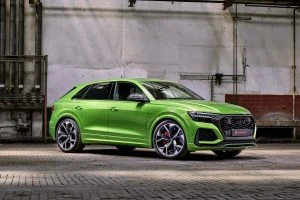
Audi RS Q8 2021
A new Audi RS Q8 is coming in October boasting a whopping 441 kW and 800 Nm. Hot performance is matched by AWD grip, and the interior is high-spec and gorgeous. Being a luxury-performance SUV from Audi, the price will be in excess of $200k.
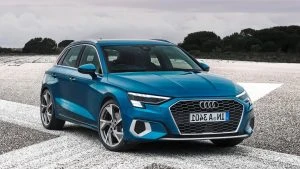
Audi A3 2021
Audi also will offer the new A3 Hatch alongside a new A3 Sedan. These two small cars will have all the latest gadgets, and will be powered by an excellent 1.4-litre TFSI turbo-petrol engine. The 4-cylinder is good for 110 kW and 250 Nm. Linked to an eight-speed torque-converter automatic, the new car will be zippy and very efficient. The A3 line-up wouldn’t be complete without the S3, and in 2021 we will see the new S3 Hatch and Sedan boasting a 2.0-litre turbocharged petrol engine with 228 kW, 400 Nm and AWD: Excitement!
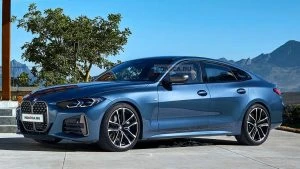
BMW 4 Series 2021
BMW gets a new 4 Series next year. The car’s styling is gorgeous, while the interior features nice materials and new, better technology. The base model 420i is good for 135 kW of power and 300 Nm of torque. The 430i packs a healthy 190 kW and 400 Nm. And the M440i xDrive uses a 3.0-litre turbocharged inline 6-cylinder petrol engine with 285 kW of power and a very strong 500 Nm of torque. All this power is put down via an eight-speed automatic and AWD.
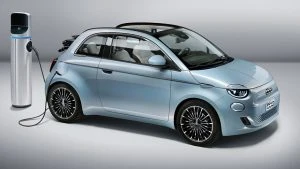
Fiat 500 EV 2021
A brand new and cute Fiat 500 EV will potentially make it to our shores in 2021. Powering the wee Fiat 500 is a 42 kWh lithium-ion battery pack that gives the car a 320km – 400 km range. This might be the perfect little urban runabout, with premium style and fun being at the forefront of the car’s design.
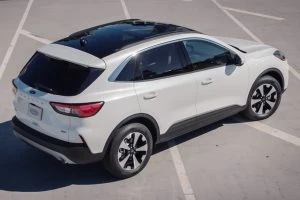
Ford Escape 2021
Ford boasts the entry of the new Ford Escape which can also be had as a PHEV model. The new Escape is really nice, practical and good to look at. It’s a comfy SUV with plenty of grunt and excellent fuel efficiency. The standard engine is the turbocharged 2.0-litre four-cylinder that produces 183 kW and 387 Nm through an excellent eight-speed automatic transmission. This engine is available throughout the range and can be had in FWD or AWD modes. The 2021 Ford Escape PHEV uses a naturally-aspirated 2.5-litre four-cylinder engine linked with an electric motor and a 14.4 kWh lithium-ion battery. The combined output is 167 kW. The Escape PHEV is good (it needs to be) and goes up against the successful Mitsubishi Outlander PHEV as well as the new Volvo XC40 hybrid.
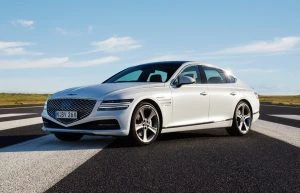
Genesis G80 2021
If you’re on the lookout for a new luxury sedan, then hang about for the latest Hyundai Genesis G80. This is quite a car with all the jaw-dropping looks to rival a Beemer 7 Series or Mercedes S-Class. A 2.5-litre turbo or 3.5-litre turbo petrol are the options, and both can be linked to RWD or AWD options. Smooth, quiet performance is likely to be matched with excellent reliability. The recent J.D. Power U.S. Vehicle Dependability Study looked at any problems experienced by owners of 3-year-old vehicles, and they found that the 2020 Genesis G80 was named the most dependable midsize premium car with the lowest rate of reported problems over time.
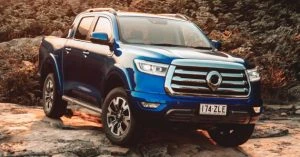
Great Wall Ute
A new Great Wall Ute has just become available, and it’s a nice package. The range consists of the Cannon, the Cannon-L and the range-topping Cannon-X. The new Great Wall Ute will come with the strong new 2.0-litre turbo-diesel 4-cylinder engine producing 120 kW of power and 400 Nm of torque. It will be offered with a choice of a six-speed manual or a ZF-sourced eight-speed automatic transmission, and it will also be able to pull a braked trailer of 2250 kg. This is similar in size to a Ford Ranger, Nissan Navara or Toyota Hilux, except it will be cheaper to buy.
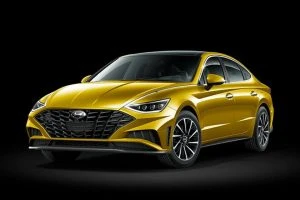
Hyundai Sonata 2021
We’ve got the classy looking new Hyundai Sonata Sedan. This has to be arguably the best looking mid-to-large sedan on the market. N-Line Sonatas are particularly good-looking and boast 19-inch alloy wheels, a boot-lid spoiler, unique bumpers, blacked out accents, a quad-tipped exhaust and a rear diffuser. The N-Line isn’t short on power either, with the new 213 kW/422 Nm 2.5-litre four-cylinder turbo petrol more than capable of dancing a jig. It’s also mated to an eight-speed dual-clutch automatic gearbox, which can see the car through to 100 km/h from a standstill in a mere 5.3 seconds.
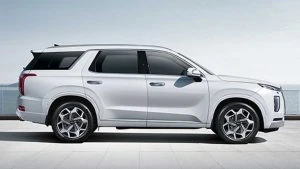
Hyundai Pallisade 2021
Hyundai’s new seven-seater Pallisade looks immense – which it is. This is a large luxury SUV with all the comfort of an S-Class. In Australia, we will get a petrol and a diesel option – which is excellent. The 3.8-litre V6 petrol is up for 217 kW of power and 355 Nm of torque. It’s mated to a very smooth eight-speed automatic transmission. The 2.2-litre turbo-diesel makes 147 kW and 440 Nm via its eight-speed automatic and AWD set-up. Diesel Pallisades are very efficient for such a big bruising SUV, and both engines are really good towing units.
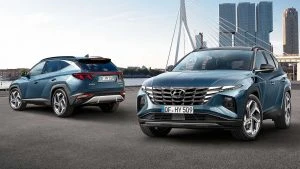
Hyundai Tucson 2021
Hyundai also boast the arrival of the new Tucson with its nice streamlined looks. The Tucson has proven pretty popular in Australia, so with the new base engine a naturally-aspirated 2.0-litre four-cylinder petrol, a turbocharged 1.6-litre petrol and a 2.0-litre turbo-diesel unit the options for power, the new medium comfortable SUV is set to build on current success story.
Hyundai iMax vans are very good and there will be a new one of these available by the end of 2021.
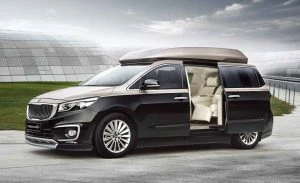
Kia Carnival 2021
Soon, you will be able to get into a new Kia Carnival, and with seven, eight or 11 seat configurations, this is a comfy and practical people mover. The new Carnival has to be one of the spunkiest looking people movers on the market; in a market which has seen the Honda Odyssey having the better styling over recent times. The new Carnival has it all: luxury, comfort, technology, safety; it’s all there.
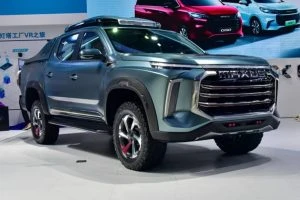
LDV T60 Ute 2021
A new LDV T60 will grace our roads next year. This is a good-looking, hard-working ute with good mechanicals, decent output and nice comfort and tech. It will come with the rugged turbo-diesel, which offers 120 kW and 375 Nm, ensuring frugal, dependable transport. The T60 has some pretty funky styling, boasting a seriously big grille, slim-line head lights, and a front DRL that runs the width of the ute.

Mercedes Benz S-Class 2021
An all-new Mercedes Benz S-Class is on the horizon. Expect the best and nothing less.
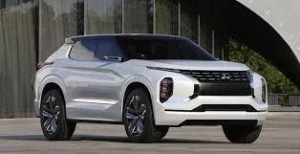
Mitsubishi Outlander 2021
Awards for most futuristic car might be going to the brand new 2021 Mitsubishi Outlander. The range-topping Outlander PHEV is expected to feature a larger battery than the current plug-in hybrid model, while the other engines are likely to be new, also.
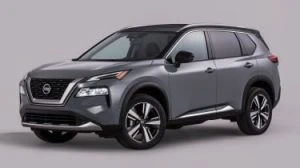
Nissan X-Trail 2021
I’ve always been a fan of the X-Trail’s ability in all areas, and now the new Nissan X-Trail is upon us with a design that has been pleasantly tweaked, and offering more technology in the classy package. Inside the new model, it’s packed with a new infotainment system with a 10.8-inch colour head-up display, a 12.3-inch digital dashboard, and a 9.0-inch touchscreen. Wireless Apple CarPlay is included, along with wireless phone charging. Nissan will also offer a full ProPilot suite of active safety assists on this model that will make this one of the safest in its class. The AWD system packs a new electro-hydraulic clutch, which is designed to more accurately and quickly shuffle the power load around the wheels when slippage is detected.
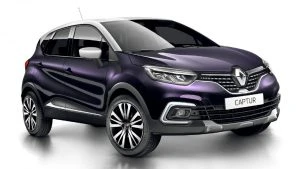
Renault Captur 2021
Renault’s classy small Captur SUV is worth the wait. Power will come from a 1.3-litre turbocharged petrol engine that is mated with a seven-speed dual-clutch transmission. Output is rated at 117 kW of power and there is a healthy 260 Nm of torque. Practicality and comfort is good inside a new Captur, which has a two-tier boot that holds up to 536 litres of luggage, and the split/folding rear seats can also be slid forward and back as needed.
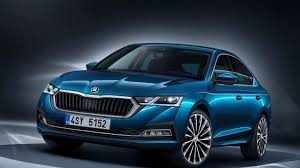
Skoda Octavia 2021
A sleek new Skoda Octavia impresses with its low-slung lines available in sedan or wagon styling. I personally love the shape of the wagon, with its long roofline and nicely filled out haunches. The Skoda Ocatvia RS will be powered by a 2.0-litre four-cylinder turbocharged engine making 180 kW and 370 Nm. A locking front differential and dual-clutch transmission will be standard. An efficient 1.4-litre turbocharged petrol four will likely run the rest of the Octavias. Skoda Octavias have always been at the forefront of space and practicality.

Subaru Outback 2021
A brand new Subaru Outback is coming! This is a brilliant SUV/Wagon built for tackling the rough as well as the smooth. The five-seater sits on a new modular Subaru Global Platform that is stiffer, boosting handling prowess and safety credentials. The exterior styling looks good, while the cabin is new and stylish. An 11.6-inch portrait-oriented centre touchscreen looks and functions really nicely. So, there’s a 2.5-litre naturally aspirated Boxer petrol engine that hauls nice and smooth and will be standard across the range. Also, a new 2.4-litre turbo unit with 190 kW of power replaces the six-cylinder option. This is a swift runner with great handling. All models will be offered with the symmetrical AWD system, and they’ll use a CVT with eight stepped ratios.
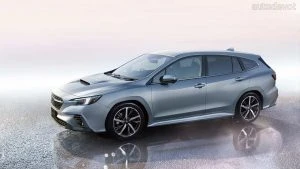
Subaru Levorg 2021
A new Subaru Levorg is also about to run out on stage. To start with, the Subaru Levorg will be powered exclusively by a 1.8-litre turbocharged four-cylinder boxer engine with 130 kW of power between 5200 and 5600 rpm, and 300 Nm of torque between 1600 and 3600 rpm. All-wheel drive is, of course, standard, as is a CVT. A punchier big Turbo model will, no doubt, become available later on.
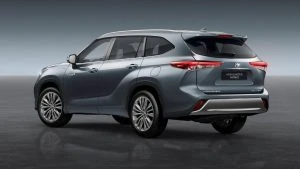
Toyota Kluger 2021
The new Toyota Kluger looks really good for the buyer looking to upgrade their old SUV. An electrified version of this comfy and stylish seven-seat SUV will make the running costs even better. The new Kluger hybrid blends a 2.5-litre petrol engine with two electric motors and a compact battery, delivering a maximum 179 kW output to the capable AWD system. If you’re after petrol alone, then the 3.5-litre V6 offers a throaty 218 kW and strong performance. FWD or AWD options are available, both of which run with a smooth eight-speed automatic transmission. Drive one of these, and you can see why so many people like-and-buy Klugers.
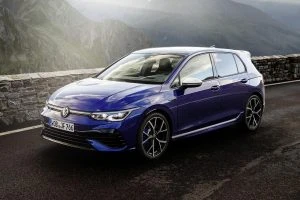
Volkswagen Golf 2021
Volkswagen has their popular new Golf on sale soon; and a new Golf always looks nice parked up the driveway.